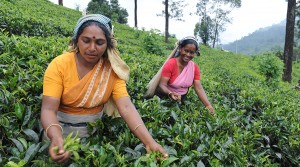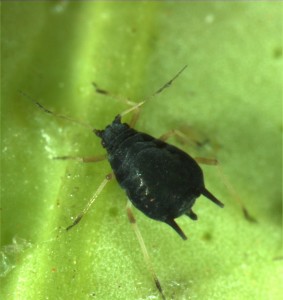by: Jahni Threatt
Botanical Description
Tea, the most widely consumed beverage in the world, comes from a plant called Camellia sinensis. The plant is a member of the Theaceae family and a subspecies of the genus Camellia. The Camellia sinensis plant is an evergreen bush. On farms these bushes are usually trimmed to a height of two to four feet, but they have the ability to grow up to thirty feet tall in the wild. Other features of the plant include rough bark, short gray stalk, dark green leaves, and occasional distinctive white blossoms that resemble roses.
Native and Cultivated Geographic Ranges
The genus Camellia includes over 80 different species all native to the highlands of Southeastern Asia. This area includes modern-day northeast India, north Burma, southwest China and Tibet. India is the world’s number exporter of tea, and home to the famous Darjeeling tea, which is considered to be the “champagne of teas”. China is another big tea exporter. China exports mostly black tea leaves, but only exports about 20-25% of their green tea leaves (the rest is consumed). Other geographic regions known for cultivating tea include Japan, known for exclusively exporting green teas, East Africa, known for exporting fragmented black teas, Russia, and parts of South America.
Suitable Climate
Understanding climate is essential to understanding what conditions are suitable for growing tea. Climate is very easily influenced by elevation and moisture, and moisture and precipitation have a large influence on the health of a tea plant. Mountain slopes are ideal sites for tea cultivation due to the fact that they have good drainage. Tea plants need water, but not idle, looming water, so good drainage is a must. With that being said, 120cm-150cm is the ideal amount of rainfall required for tea plants; too much rain may cause erosion, root damage or even undesirable flavors after the tea is harvested. Although these are ideal growing conditions, the producing regions of tea are subject to widely varying climatic conditions.
Suitable Soil Properties
As stated before, because of the risk of erosion tea plants require decent drainage; therefore mountain-like soils with good drainage are key. Tea plants also prefer acidic soils with a pH ranging from about 4.5 to 5.5. Shallow and compact soils are not ideal for tea plants, as they may limit or cause damage to the roots of the plant. The consequences of growing tea plants in these kinds of soils include drought during the drier months and over-saturation during rainy months. Tea plants also flourish in soils that contain lime, iron, and large amounts of humus.
Major Pests and Diseases
Tea plants suffer from many pests and diseases. A few of them include, Camellia dieback and canker, Camellia flower blight, Root rot, Algal leaf spot, Blister blight, Horsehair blight, Red root disease, Tea scale, Aphids, and spider mites.
- Camellia dieback and canker is a disease caused by a fungus that can enter through wounds on the the tea leaves. This disease causes tea leaves to yellow and wilt, kills branch tips, blotches on stem and bark that become sunken areas, and more. Good drainage and the removal of diseases stems can help reduce spread and infection.
- Root rot is a disease caused by an oomycete, which is a fungus-like eukaryotic microorganism, and emerges in areas where there is poor drainage and warm soils. Root rot causes tea leaves to turn yellow, inhibits plant growth, discolors roots, can cause the entire plant to wilt, or even worse, rapid death of the plant.This particular disease can be difficult to control once it has begin to spread, but good drainage is always a great help.
- Algal leaf spot is a disease caused by algae and thrives in high temperatures and humidity. This disease may cause green or gray spots on the leaf with a green-lined brim. Algal leaf spot can be avoided by providing plants with adequate spacing, pruning when appropriate, removing diseased leaves, and avoid overhead watering.
- Aphids are little soft bodied insects with tubular structures called cornicles on the end half of its body. Aphids are usually found on the undersides of leaves and is responsible for the yellowing of tea leaves, causing damage by biting holes through the leave, stunted plant growth, and even mold. Aphids can usually be avoided by pruning or a rough spraying from a water hose; however if the infestation becomes too large you may have to resort to killing them (with either insecticide or manually with a knife).
- Spider mites are tiny arachnids. They can be found on the underside of tea leaves or on the webs that they spin on the top of the leaves. Spider mites can cause yellow spots on leaves, give leaves a bronze-like appearance and more. Spider mites infestations can also be managed with a rough spraying from a water hose or insecticides.
Propagation Methods
There are two methods of tea propagation; seeds and rooted stem cuttings. The first method is propagation by seed, which is simply growing the tea plant from the seed. The seed is usually soaked, germinated, then placed in a nursery. After being trimmed to desired length the young plant is transplanted into the ground. Tea plants are typically ready to harvest after three years. In the rooted stem cutting method nodes from desired varieties are placed in bags of compact soil and watered regularly. After six to nine months the new tea plants are removed from the bags and placed in the ground.
Cultivation and Harvest Practices

In 2014, the U.S. received 285 million pounds of tea. Unlike most monoculture crops in the US, tea is a delicate crop that is usually not harvested by a machine. Tea leaves are typically harvested by hand. The only leaves that are harvested are the young leaves usually at the top of the bush, along with a small portion of the stem. As we learned in Darjeeling Distinction, the labor force of the tea industry is female dominated as a result of numerous political, economic, and social factors. The image of smiling women harvesting tea leaves is used in countless tea advertisements. Many have argued that this along with misleading organic and fair trade disguises the true face and injustices within the industry.




